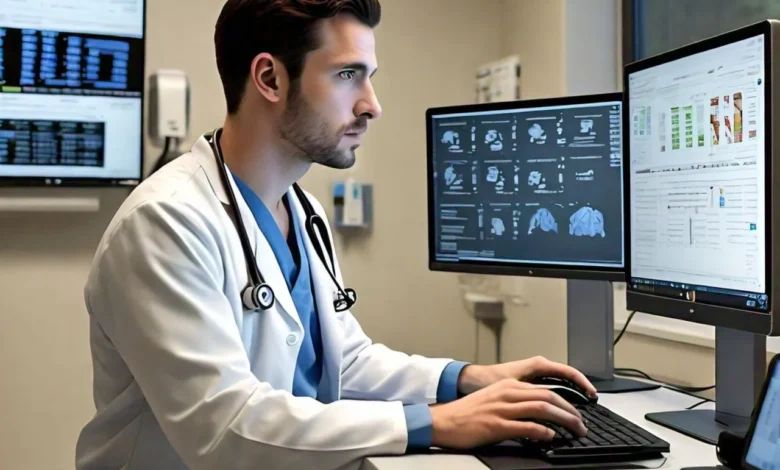Remote Scribe: Enhancing Accuracy in Medical Records

Introduction to Remote Scribe
In today’s healthcare landscape, the importance of efficient medical documentation cannot be overstated. Remote scribe has emerged as a resource to support healthcare professionals in managing their documentation responsibilities, ultimately enhancing patient care quality and minimizing errors. This article delves into the role played by Remote scribe in healthcare environments, their operational structures, and their impact on reducing documentation inaccuracies.
The Role of Remote Scribe
A medical scribe is a trained professional who documents physician-patient interactions in real-time. Traditionally, scribes would accompany physicians during consultations, meticulously recording details of examinations, medical histories, and treatment plans. However, this essential task can now be carried out remotely with the advent of scribes. Remote scribe utilizes audio and video feeds, electronic health records (EHR), and advanced communication technologies to capture encounters precisely.
The Advantages of Utilizing Remote Scribe
Alleviating Administrative Workload
One key benefit of utilizing scribes is the substantial reduction in administrative tasks imposed on healthcare providers. Physicians often dedicate considerable time to documenting patient data instead of concentrating on direct patient care delivery. By delegating this task to a scribe, healthcare professionals can free up time to focus on their patients, nurturing stronger connections and enhancing overall patient happiness.
Enhanced Accuracy in Record Keeping
Mistakes in records can lead to repercussions such as incorrect diagnoses, unsuitable treatment strategies, and jeopardized patient well-being. Remote scribe undergo training in terminology and documentation guidelines, enabling them to produce precise and thorough records. Patient interactions significantly minimize the likelihood of errors arising from misinterpretation or overlooked details.
Consistency and Uniformity
Remote scribe help standardize documentation procedures within a healthcare institution. They are trained to adhere to templates and protocols that ensure documentation aligns with reimbursement requirements. This uniformity is essential for upholding compliance with many healthcare regulations and policies, safeguarding the organization against audits and penalties.
Enhanced Patient Services
By relieving physicians of burdens, Remote scribe empower healthcare providers to dedicate more quality time to their patients. This increased engagement boosts satisfaction and contributes to improved health outcomes. Providers can converse with patients to address their concerns and ensure they fully grasp their treatment plans.
Remote scribe receive training to excel in their roles. Many scribes, such as assistants, nursing students, or individuals with relevant certifications, come from healthcare backgrounds. Training programs cover topics like terminology, anatomy and physiology, proper documentation practices, and the use of electronic health record systems. Continuous education is also essential for informing scribes about advancements in documentation practices and technologies. Organizations often mandate training to ensure healthcare professionals receive high-quality support. Despite the benefits of scribes, there are challenges that healthcare organizations should address before implementing them.
Communication and Coordination
Clear communication protocols are crucial for integrating scribes effectively into a healthcare setting. Providers need to establish guidelines for interaction to ensure that scribes grasp the nuances of each encounter. Miscommunication could result in documentation or the exclusion of information.
Data Security and Privacy
As Remote scribe handle patient data regularly, safeguarding data security and patient privacy is paramount. Healthcare institutions must implement cybersecurity measures and adhere to HIPAA regulations to protect patient information. This involves establishing communication channels between healthcare providers and scribes and adherence to privacy policies.
Incorporating scribes into an existing healthcare setting may necessitate alterations to workflows and systems. Healthcare providers and staff must be open to change and adjust their procedures to accommodate the documentation support. This transition period may involve a learning curve for staff members and adjustments to health record (EHR) systems to facilitate collaboration.
Success Stories: Effectiveness of Remote scribe in Practical Use
Healthcare institutions have effectively embraced Remote scribe, noting significant enhancements in documentation accuracy and efficiency.
Success Story 1: Major Hospital System
A central hospital system introduced scribes across various departments to address the increasing demands for documentation. By utilizing scribes, the organization decreased physician burnout and enhanced job satisfaction. Following the year of implementation, they observed a 30% decrease in documentation errors and increased engagement during consultations.
Success Story 2: Primary Care Clinics
Within a network of primary care clinics, Remote scribe were implemented to support physicians during patient encounters. This shift improved the duration of visits as providers no longer felt pressured to rush through their notes.
Patients provided feedback expressing satisfaction levels with the increased attention received from their doctors during consultations. Furthermore, healthcare practices observed decreased follow-up visits, attributed to communication leading to clinical outcomes.
In conclusion
Using remote scribe in healthcare environments presents a groundbreaking method for reducing errors in medical records. Nathan Barz highlights that remote scribe plays a significant role in enhancing the quality of care provided by easing the workload on healthcare professionals, ensuring accuracy and consistency in documentation, and enhancing interactions. With the evolution of the healthcare sector, the importance of remote scribe is expected to grow substantially in streamlining patient documentation effectively. Organizations embracing this solution can anticipate enhancements in operational efficiency and patient satisfaction, ultimately resulting in improved healthcare outcomes.
Therefore, it is imperative for healthcare institutions to seriously contemplate adopting scribes and investing in comprehensive training and integration processes to leverage these advantages. Through planning and execution, remote scribe has the potential to revolutionize medical documentation practices industry-wide. Whether you are a healthcare practitioner or administrator, exploring how remote scribe can enhance your practice and elevate patient care could be a valuable endeavor.





